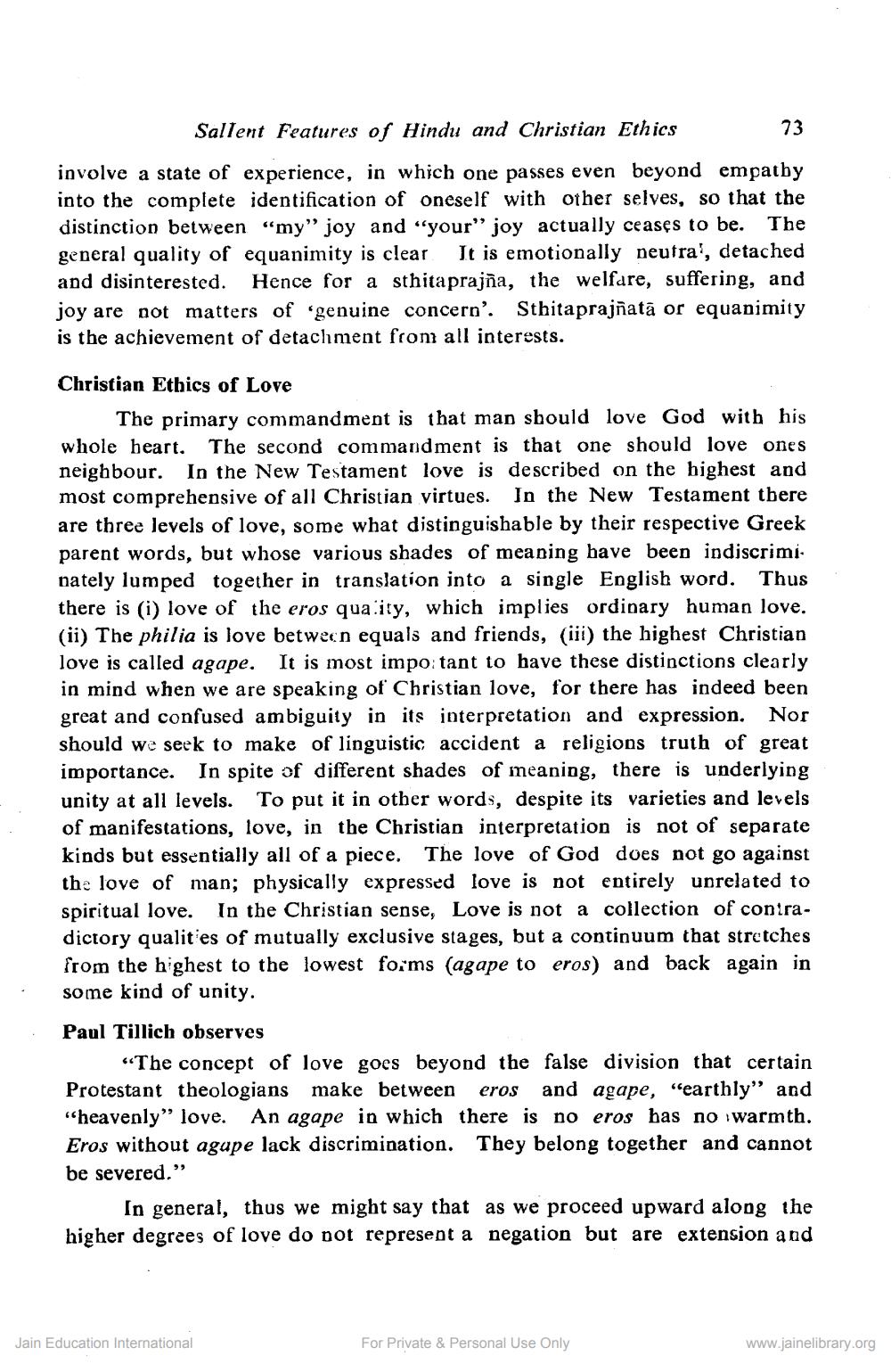________________
Sallent Features of Hindu and Christian Ethics
73
involve a state of experience, in which one passes even beyond empatby into the complete identification of oneself with other selves, so that the distinction between “my” joy and "your" joy actually ceases to be. The general quality of equanimity is clear. It is emotionally neutra', detached and disinterested. Hence for a sthitaprajña, the welfare, suffering, and joy are not matters of 'genuine concern'. Sthitaprajñatā or equanimity is the achievement of detachment from all interests.
Christian Ethics of Love
The primary commandment is that man should love God with his whole heart. The second commandment is that one should love ones neighbour. In the New Testament love is described on the highest and most comprehensive of all Christian virtues. In the New Testament there are three levels of love, some what distinguishable by their respective Greek parent words, but whose various shades of meaning have been indiscrimi nately lumped together in translation into a single English word. Thus there is (i) love of the eros qua.ity, which implies ordinary human love. (ii) The philia is love between equals and friends, (iii) the highest Christian love is called agape. It is most impo:tant to have these distinctions clearly in mind when we are speaking of Christian love, for there has indeed been great and confused ambiguity in its interpretation and expression. Nor should we seek to make of linguistic accident a religions truth of great importance. In spite of different shades of meaning, there is underlying unity at all levels. To put it in other words, despite its varieties and levels of manifestations, love, in the Christian interpretation is not of separate kinds but essentially all of a piece, The love of God does not go against the love of man; physically expressed love is not entirely unrelated to spiritual love. In the Christian sense, Love is not a collection of contradictory qualities of mutually exclusive stages, but a continuum that stretches from the highest to the lowest forms (agape to eros) and back again in some kind of unity.
Paul Tillich observes
“The concept of love goes beyond the false division that certain Protestant theologians make between eros and agape, "ea “heavenly" love. An agape in which there is no eros has no warmth. Eros without agape lack discrimination. They belong together and cannot be severed.”
In general, thus we might say that as we proceed upward along the higher degrees of love do not represent a negation but are extension and
Jain Education International
For Private & Personal Use Only
www.jainelibrary.org




